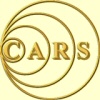 |
G0MWT, GX0MWT, GB5HF, GB5SM, GB2TAM, M2T, GB100MWT, G100RSGB & GB5RVA
CARS Meetings January - March 2015 |
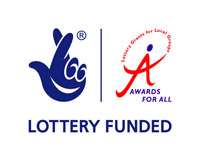
|
 |
G0MWT, GX0MWT, GB5HF, GB5SM, GB2TAM, M2T, GB100MWT, G100RSGB & GB5RVA
CARS Meetings January - March 2015 |

|
ęCopyright CARS 2015
19th March 2015
March Meeting report on The GB3VHF Story
January Meeting
Tue 6-Jan-2015, 7.30-10pm
Oaklands Museum, Moulsham Street"Radio Amateur Awards"
By Carl Thomson G3PEMOur first meeting of the New Year was on Tuesday January 6th. Our president. Carl G3PEM gave a talk about radio amateur awards The last time CARS had such a talk was about 10 years ago, so this was a long overdue for a reminder.
Carls talkCarl brought along slides and a wide variety of background material and awards to illustrate another branch of this fascinating hobby of ours
Topics included: How to start collecting awards and where to find details of the award programmes. Organising QSL cards and electronic logging can help matters!
DARC 40m Award - rather unusual - it is etched in copper!
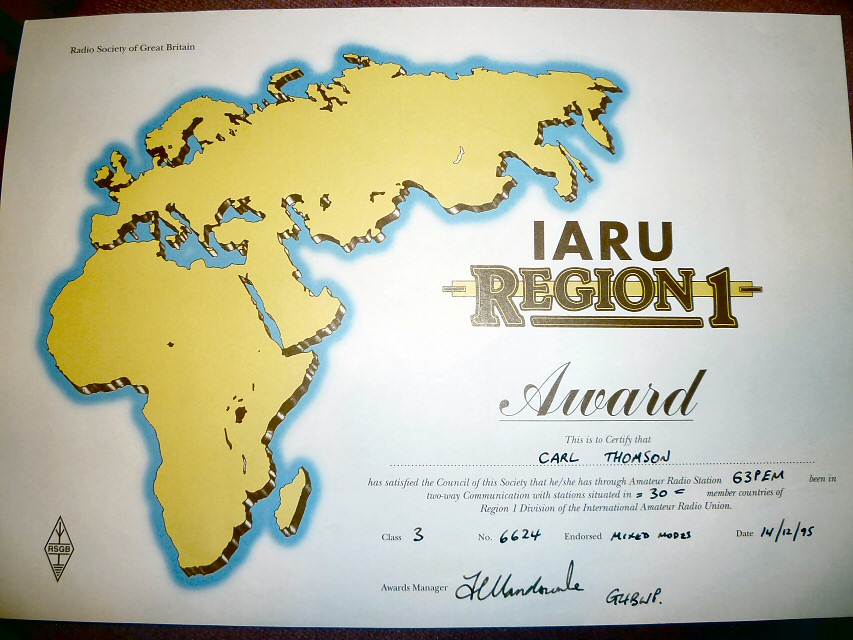
You can get awards based on Regions or other geographic features
DXCC - one of the premier awards
All photos courtesy of Murray G6JYB
Despite the winter weather and cold bugs, a good evening was had by those who attended - many thanks Carl.
Useful Links:-
K1BV: DX Awards directory RSGB: HF/VHF Awards RSGB: IOTA ARRL: DXCC WAB: Worked All-Britain
February Meeting
Tue 3-Feb-2015, 7.30-10pm
Oaklands Museum, Moulsham Street"Probing the Northern Lights"
By Dr Brendan Goodbody
Ever worked aurora, but don't know what it really is/does? Our February talk covered how observations and science of the aurora have developed over time. Brendan who now works at BAE Systems Great Baddow recently completed his PhD related to this at Southampton University, including some 'cool' on site visits.
Brendan gave a colourfully illustrated talk of slides and movie clips of auroras, the processes that create and control them, and how that affects us on earth.
Surges in the solar wind such as Coronal Mass Ejections (CMEs) can interact with and be acclerated by the Earths magnetic field lines around the polar regions. This can ionise the rarified nitrogen and oxygen at high altitudes and cause the auroral light emission, as well as magnetic and ionospheric disturbances.
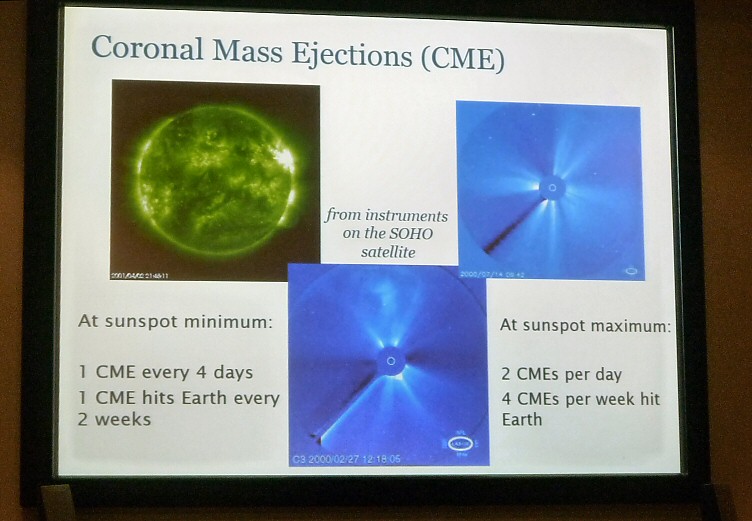
Solar CMEs are a major cause of auroras and vary with the sunspot cycle
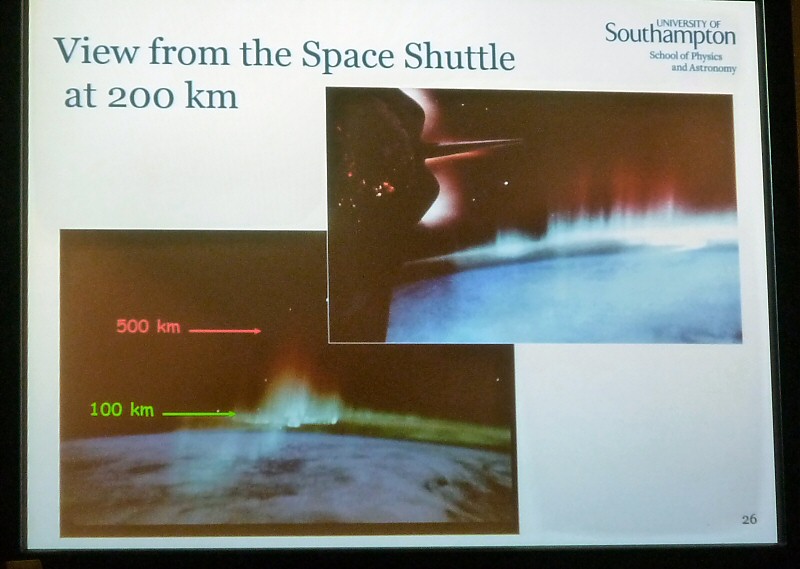
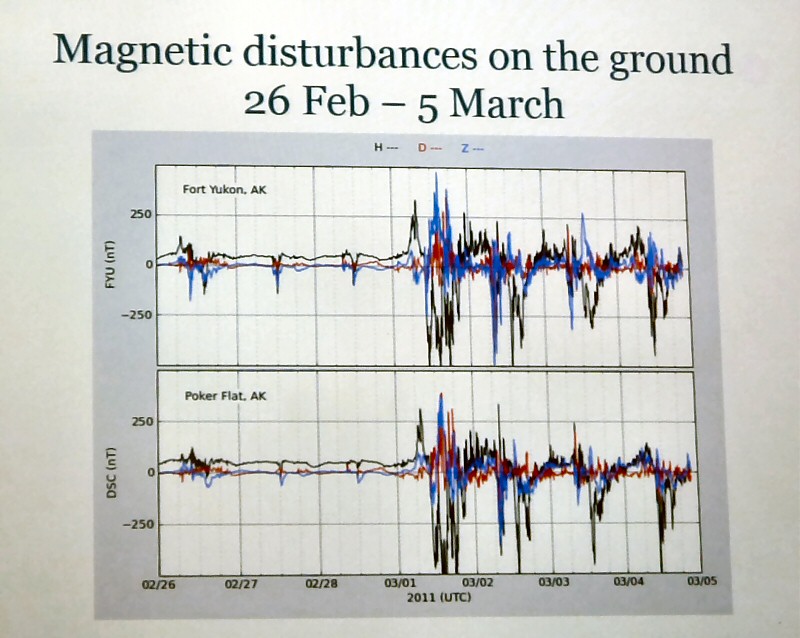
Aurora occur above 70km but can be far higher - and also disturb the Earths field at ground level
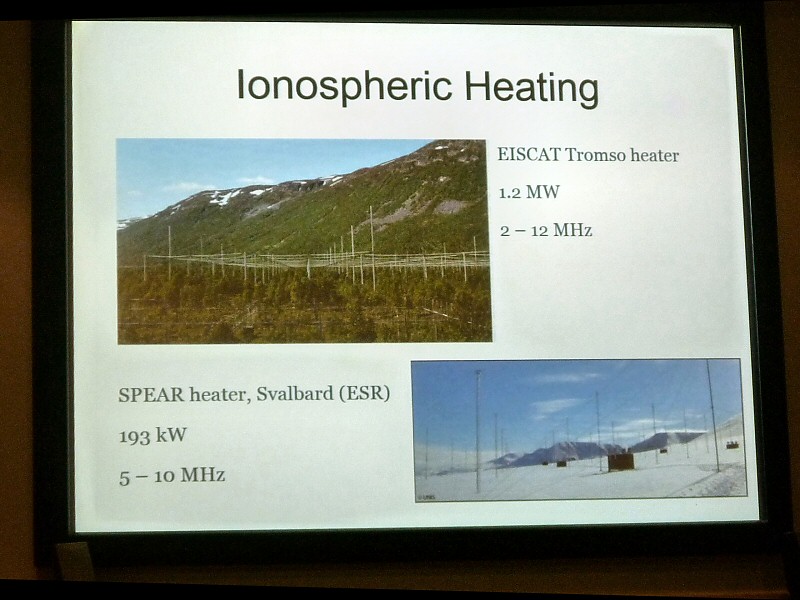
Humans can have different ways of investigating auroras!
(Photos above by Murray G6JYB)
Brendan receives the customary CARS mug (Photo by John G8DET)The talk also included detail from his own PhD which involved radar and optical studies of aurora features known as Naturally Enhanced Ion Acoustic Lines (NEIALs). This involved using optical and imaging radar equipment at Svalbard, which is an archipelago north of Norway above the Arctic circle. Trips to Svalbard include safety training in case of polar bear attacks!
So whilst HAARP may be no more, auroral research (popularised by the new term 'Space Weather') is very much alive, both on earth and even observing aurora on other planets.
Useful Links:-
EISCAT: Sweden, UK, Svalbard Radar Research: Southhampton, Thesis
March Meeting
Tue 3-Mar-2015, 7.30-10pm
Oaklands Museum, Moulsham Street"The GB3VHF Story"
By Chris Whitmarsh G0FDZPropagation beacons provide a vital service, but do you know what is in one? GB3VHF at Fairseat (formerly Wrotham) in Kent is a prime example and flagship for modern beacon technology. Transmitting on 144.430 MHz, it can be heard over 1700km away, reminding us of how propagation can vary and that VHF isn't always line of sight...
Beacon keeper Chris G0FDZ is no stranger to construction, from VHF up to millimetre wave bands. Over the course of ~70 slides, the talk gave an overview of some beacon essentials, followed by the history of GB3VHF (which is one of the worlds oldest beacons) and then details of the current beacon, its relocation to Fairseat, finishing with a preview of the new GB3UHF 70cm beacon.
GB3VHF has its roots as GB3IGY in Kent which was prompted by the 1956/7 International Geophysical Year, and operated over 1957/8. As a long term facility, GB3VHF itself started operating in December 1960 at the BBC Wrotham site in Kent and had involved amateurs working as BBC engineers. Originally transmitting on 144.500 MHz, later band plan changes saw it move to its current frequency of 144.430 MHz. Chris described with the aid of some fascinating illustrated slides how it evolved through several generations of hardware:-
Compared to its outstanding performance and accuracy nowadays, early reports on the RSGB Bulletin (now RadCom) used to indicate its frequency drift (up to ~1.5kHz). Chris had kept some of the early hardware such as this driver unit:-
- Original Valve design and punched tape mechanical keyer
- 1970 Discrete diode /transistor matrix keyer (pre-TTL)
- 1980 Z80 microprocessor keyer
- 2006 current GPS-locked synthesiser
The former 1970s driver unit, included a Cathodeon crystal ovenIn May 2003, Chris G0FDZ became the beacon keeper due to the death of the previous keeper Bob Mersh G8JNZ. It was becoming obvious that a new generation of design and performance was necessary which led to the current groundbreaking introduction of GPS-locked synthesis. This delivers not only a very accurate carrier frequency, but also adds a sequence of digital modes and phase reversals for weak-signal DX reception and scientific time-of-flight measurements.
System block diagram for the current beaconThe latest construction standards are also very high and it is designed to be fully accessible from the front of the 19" rack format. Interestingly the PA is fanless for maximum reliablity and lower noise artefacts. In February 2010 both costs and access at Wrotham had become unsustainable. A lot of hard work occurred so that by April it was re-sited to the nearby BT tower at Fairseat (JO01EH). For this great care was taken with the professional antennas and feeders to achieve near identical coverage compared to its former Wrotham location.
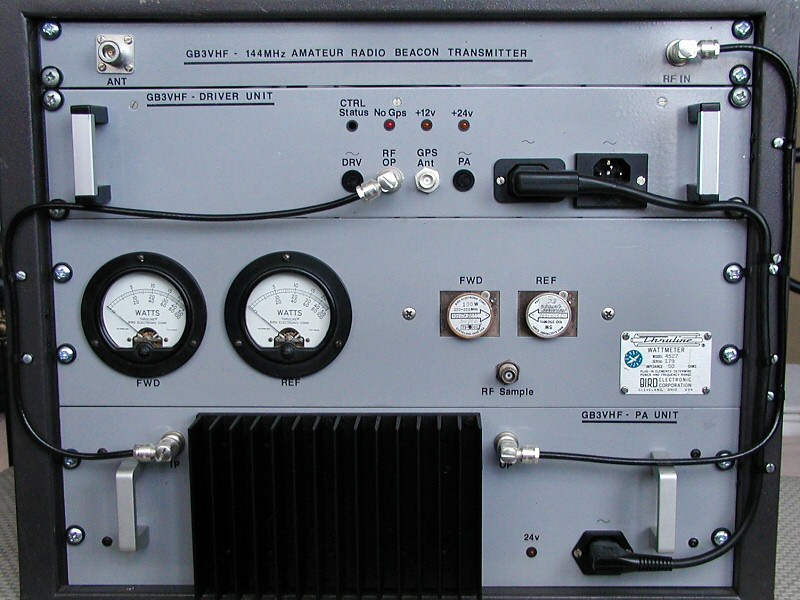
The current GPS-locked GB3VHF, which is received regularly across the UK and EuropeChris finished with a rare preview of the new GB3UHF 70cms beacon which is similar in concept and will be on 432.430MHz. After a long gestation period, RSGB managed to get Primary User and Ofcom approval for a series of 70cm beacon changes in 2014. The new GB3UHF is a key element as it will enable comparisons with GB3VHF. Unfortunately the metallised windows at the museum prevented the GPS signal from being received indoors, curtailing a fuller demo! After the usual show of appreciation by the audience John G8DET presented a donation to the beacon costs and upkeep on behalf of CARS.
Chris with GB3UHF
John G8DET thanks Chris and presents a donation from CARS to support the beaconsUseful Links:-
GB3VHF: Website Reports: BeaconSpot
To RETURN to the Meetings Page - Click Here
To RETURN to the CARS Home Web Page - Click Here